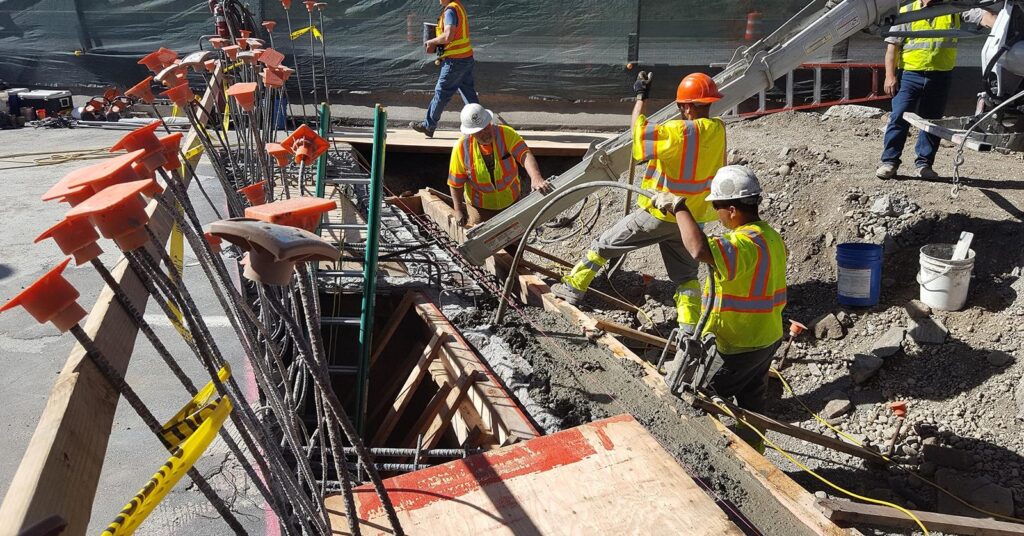Are you curious to know what is safe construction practice? You have come to the right place as I am going to tell you everything about safe construction practice in a very simple explanation. Without further discussion let’s begin to know what is safe construction practice?
What Is Safe Construction Practice?
Safety is paramount in the construction industry. The act of creating structures and spaces, while rewarding, presents a multitude of hazards that require careful management. Safe construction practices are not only about protecting workers but also ensuring the long-term structural integrity of buildings. In this blog, we will explore the importance of safe construction practices, their key principles, and how they contribute to the well-being of workers and the quality of construction projects.
The Importance Of Safe Construction Practices
Safe construction practices are crucial for several reasons:
- Worker Well-being: The construction industry is known for its physical demands and potential dangers. Prioritizing safety protects the health and lives of construction workers.
- Legal Compliance: Many countries have strict regulations and standards for construction safety. Compliance is not only a legal obligation but also an ethical one.
- Project Quality: Safe practices contribute to the long-term durability and quality of construction projects. A safe environment encourages attention to detail and precision in work.
- Cost-Efficiency: Safety measures help prevent accidents and injuries, which can be costly in terms of medical bills, lost workdays, and potential lawsuits.
- Reputation: Firms that emphasize safety tend to have better reputations, attracting skilled workers and clients who value safety.
Key Principles Of Safe Construction Practices
- Training and Education: Proper training is the foundation of construction safety. Workers should be well-versed in the potential hazards and trained in safe work procedures.
- Protective Equipment: The use of personal protective equipment (PPE) is a fundamental safety measure. Helmets, safety glasses, gloves, and high-visibility clothing are just a few examples of PPE.
- Fall Protection: Falls are a common construction hazard. Guardrails, safety nets, and personal fall arrest systems are essential for preventing injuries.
- Safe Equipment Operation: Workers operating heavy machinery and equipment must be trained and certified. Regular equipment maintenance is critical to prevent malfunctions.
- Hazard Identification: A proactive approach to hazard identification is crucial. Regular site inspections and hazard assessments should be conducted.
- Communication: Effective communication between workers, supervisors, and management is essential for disseminating safety information and responding to concerns.
- Emergency Preparedness: Construction sites should have clear emergency response plans in place. This includes having first-aid kits, fire extinguishers, and evacuation procedures.
- Proper Scaffolding: Scaffolding must be erected correctly and inspected for safety. It is a common source of accidents when not properly assembled.
- Materials Handling: Safe practices for materials handling, storage, and disposal are critical. This includes preventing overloading and ensuring secure storage.
- Housekeeping: A clean and organized construction site is a safer one. Proper disposal of waste, removal of debris, and well-organized work areas reduce the risk of accidents.
Contributions To Quality Construction
Safe construction practices are not just about avoiding accidents; they also contribute to the quality of the construction project:
- Accuracy: Safety practices encourage precision and attention to detail, resulting in more accurate and high-quality work.
- Durability: Safe construction methods help ensure that structures are built to withstand environmental stresses and the test of time.
- Efficiency: A safe working environment enhances efficiency by minimizing disruptions caused by accidents or injuries.
- Sustainability: Safety practices often align with sustainability principles, as they encourage responsible material use and waste reduction.
- Client Satisfaction: Clients are more likely to be satisfied with a project when it is completed on time, within budget, and with high-quality workmanship.
Conclusion
Safe construction practices are the cornerstone of the construction industry. They safeguard the well-being of workers, ensure compliance with regulations, and contribute to the overall quality and durability of construction projects. Emphasizing safety not only makes ethical and legal sense but also has tangible benefits in terms of cost-efficiency, reputation, and client satisfaction. In the world of construction, safety should always be a top priority.
FAQ
What Are Safe Construction Practices Class 10?
Houses should be constructed on stilts or columns. Doors and windows should have strong closing and locking systems to with stand the force of the wind. Openings just below the roof should be avoided. Glass panelling can be avoided in buildings situated in cyclone prone areas.
What Are Safe Construction Practices For Disaster Management?
Rectangular or square shapes are not suited. A symmetrical building with a compact plan is most suited to withstand cyclones. As cyclones are accompanied by torrential rain inundation is inevitable, so houses should be elevated. Houses should be constructed on stilts or columns.
What Are The Safe Construction Practices During Cyclone?
Use building layout with a simple regular shape, to avoid concentration of pressure. Build the roof at an angle of 30° to 45° to prevent it being lifted off by the wind. Avoid wide roof overhangs; separate the veranda structure from the house.
What Are The Safe Construction Practices To Prevent Landslides?
There are also various direct methods of preventing landslides; these include modifying slope geometry, using chemical agents to reinforce slope material, installing structures such as piles and retaining walls, grouting rock joints and fissures, diverting debris pathways, and rerouting surface and underwater drainage.
I Have Covered All The Following Queries And Topics In The Above Article
What Is Safe Construction Practice Ppt
What Is Safe Construction Practice Pdf
What Is Safe Construction Practice Disaster Management Pdf
What Is Safe Construction Practice Disaster Management
What Should Be The Role Of Community During A Disaster
Safe Construction Practices For Earthquake
What Should Be The Role Of Community During A Disaster Class 10
Safe Construction Practices For Tsunami
What Is Safe Construction Practice
What is safe construction practices class 10th






